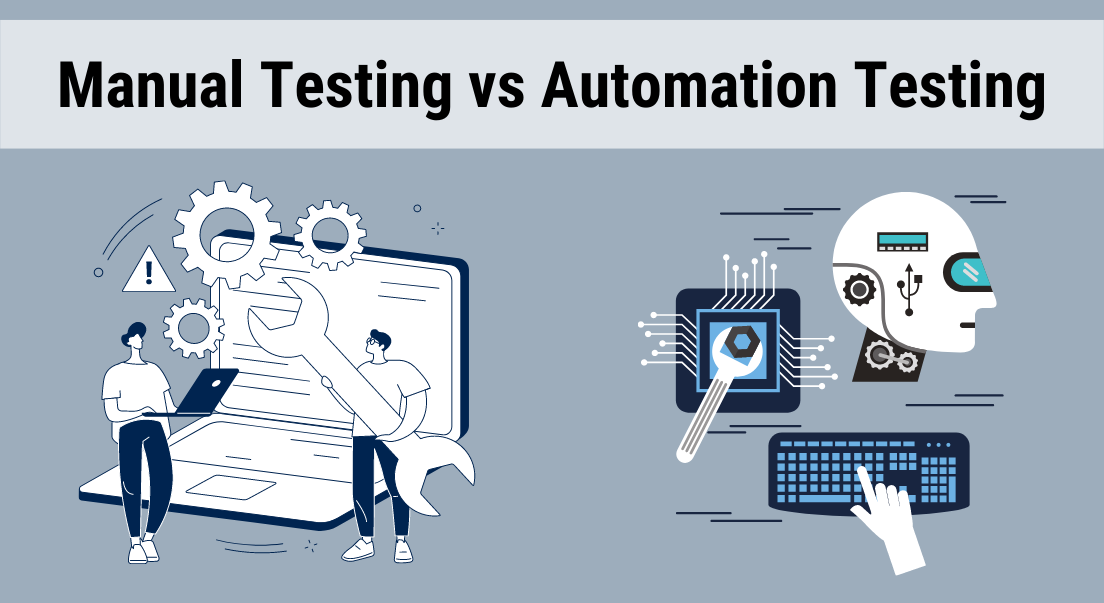Picking the Right Tools for Effective Automation Testing Solutions
Picking the Right Tools for Effective Automation Testing Solutions
Blog Article
From Handbook to Automated Screening: A Comprehensive Guide to Transitioning Smoothly and Properly
In the realm of software application testing, the change from guidebook to automated procedures has actually come to be a progressively essential change for companies looking for to boost efficiency and accuracy in their testing techniques. As technology proceeds to advance, the demand for effective and smooth computerized testing approaches has actually never been more pressing. The journey from manual to automated testing is not without its difficulties, but when come close to tactically and with a clear plan in mind, the advantages can be considerable - automation testing. In this comprehensive overview, we will certainly explore vital actions and considerations essential for an effective change, from the preliminary selection of tools to the combination of automation into existing process. Remain tuned to reveal the understandings that will aid lead the way for a smoother and extra effective testing procedure.
Benefits of Automated Evaluating
Automated screening offers numerous advantages, boosting performance and accuracy in software program advancement procedures. Automated tests can be run at the same time on multiple devices and running systems, significantly speeding up the testing phase compared to manual testing.
Additionally, automated testing ensures a greater level of accuracy in spotting defects. Considering that automated tests follow predefined scripts, human mistake is lessened, leading to even more dependable test results. Consistency in testing is also improved, as automated tests execute the exact same steps specifically each time they are run. This consistency is vital in ensuring that all performances of the software are thoroughly checked, reducing the chance of undiscovered pests sliding through to production.
Picking the Right Tools

To start with, examine your purposes and requirements. Recognize the range of your project, the innovations involved, and the capability of your team. This evaluation will certainly assist you identify the capabilities and attributes you call for in your screening tools.
Second of all, consider the compatibility of the tools with your existing systems and processes. Seamless combination with your existing software program growth lifecycle is important to guarantee a smooth change to automation.
Additionally, review the scalability and versatility of the devices. As your testing requires progress, the devices ought to be able to adjust and suit changes properly.
Finally, factor in the support and area around the tools. When implementing automated testing, robust support and an energetic customer neighborhood can give beneficial sources and assistance. By meticulously thinking about these aspects, you can select the right devices that line up with your needs and established the phase for an effective shift to automated screening.
Creating Reliable Examination Scripts

When crafting test manuscripts, it find more is vital to take into consideration the specific needs of the software application being examined and guarantee that the manuscripts address all critical capabilities. Detailed and clear calling conventions for examination scripts and test situations can enhance readability and maintainability. In addition, integrating error handling mechanisms within the test manuscripts can assist in determining and resolving problems immediately.
Moreover, organizing test manuscripts into modular parts can boost reusability and scalability, decreasing redundancy and improving performance in examination manuscript upkeep. Normal evaluations and updates to evaluate manuscripts are important to equal advancing software application requirements and performances. By adhering to these concepts, testers can create effective and durable examination manuscripts that add substantially to the success of automated testing procedures.
Integrating Automation Into Workflows
By seamlessly integrating automated testing tools like Selenium or Appium right into the software program development lifecycle, groups can attain faster feedback on code adjustments, leading to quicker pest detection and resolution. This integration enables for continual screening throughout the development process, ensuring that any type of problems are determined early on, resulting in greater software high quality. Proper assimilation of automation a knockout post tools calls for collaboration between growth, testing, and operations groups to develop a unified operations that optimizes effectiveness and effectiveness in delivering high-quality software application items.
Ensuring a Smooth Change
Efficiently transitioning to automated testing entails precise planning and cautious implementation to optimize and decrease disruptions efficiency in the software advancement process - automation testing. To make sure a smooth change, it is important to start by carrying out a complete analysis official statement of the existing screening procedures and identifying areas where automation can bring one of the most substantial benefits. Engaging with all stakeholders early on while doing so, consisting of programmers, testers, and task supervisors, is critical for gathering assistance and buy-in for the automation effort
Communication is key during this change phase. Clear communication of the goals, benefits, and expectations of automated screening aids to manage any resistance or worries that may occur. Furthermore, offering appropriate training and resources for employee to upskill in automation devices and techniques is essential for guaranteeing a successful shift.

Conclusion
To conclude, transitioning from guidebook to automated screening provides numerous advantages, including raised effectiveness and dependability. By choosing the appropriate devices, creating efficient examination scripts, and integrating automation effortlessly right into workflows, organizations can guarantee a effective and smooth shift. It is vital to accept automation as an important asset in software screening processes to improve overall quality and performance.
In the world of software screening, the change from guidebook to automated processes has actually ended up being a progressively vital shift for organizations seeking to improve performance and precision in their screening methods. Automated tests can be run all at once on several devices and running systems, drastically speeding up the screening phase compared to hands-on screening. Consistency in screening is likewise boosted, as automated tests execute the very same steps specifically each time they are run.To make sure the successful implementation of picked testing tools, the development of efficient examination manuscripts plays a crucial duty in verifying the functionality and performance of automated processes - automation testing. By following these principles, testers can develop robust and efficient test manuscripts that contribute considerably to the success of automated screening procedures
Report this page